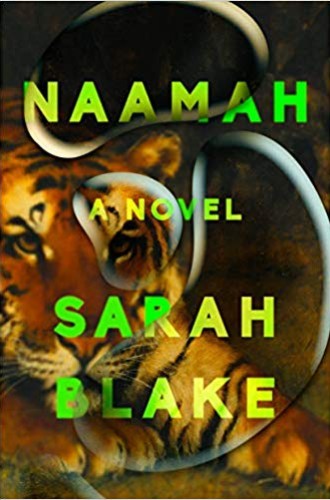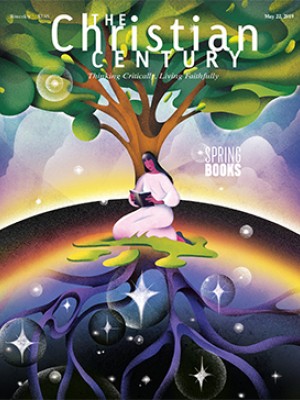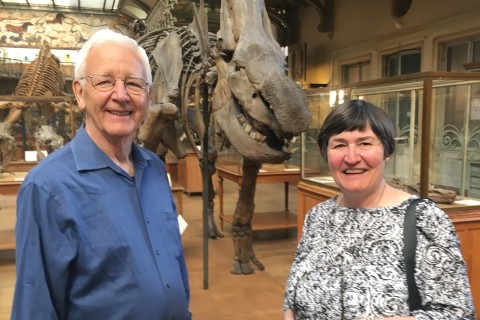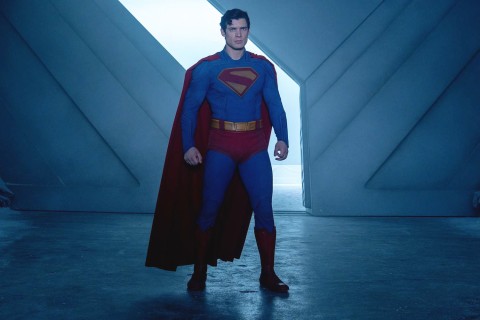The anguish and ecstasy of the ark’s matriarch
Sarah Blake’s surrealist novel about Naamah—Noah’s wife—is mesmerizing.
“It’s a novel about Noah’s wife. She has sex with an angel.” This is perhaps the worst way one could describe Sarah Blake’s mesmerizing surrealist novel, and yet it was repeatedly how I found myself summarizing the book when friends asked what I was reading.
It’s a flippant way to describe what turned out to be a substantial and lovely piece of literature. But when I started reading, I was far from convinced that the world needed another retelling of the flood narrative, and I worried that the sex would be nothing more than a cheap attempt to sensationalize a familiar story. (You won’t believe who Noah’s wife slept with next!) While that wasn’t the case, I should probably say at the beginning that this is a book with a lot of sex. If that—or if reading about characters from Genesis as flawed, hungry, doubting humans—will offend you, then this is not the book for you.
Read our latest issue or browse back issues.
But Naamah is about much more than sex. What I should have said when friends asked about the book is that it’s a story about a woman who wrestles with survivor guilt and works to rebuild in the aftermath of ecological destruction. Or that it’s a novel about motherhood and how women can bear to become vessels of life in a world marked by death. Or that it’s a novel that uses an ancient tale to ask questions that are contemporary and urgent: What does it mean to be a woman? Who gets to be named, and remembered, in our stories? What are we willing to sacrifice in order for something new to be born? What kinds of violence are acceptable to God, or for the “greater good”? How do we continue living in the wake of loss?
Blake, a poet and recipient of a Literature Fellowship from the National Endowment for the Arts, begins the story in medias res. Naamah is on the boat, staring at a horizon, hoping something will disrupt her vision. Blake’s prose is attentive to the mundane details of existence on the ark, rendering in almost too vivid detail the sounds and smells of life in close proximity to menagerie and in-laws. Readers—and Naamah—find relief from the claustrophobic scenes on the ark by moving between them and memories of life on land, hypnotic underwater sequences, and hallucinatory dreams.
Naamah’s dreams waver through surreal landscapes where people melt into fish and deserts become pools. She converses with a cockatoo and a vulture. She and her descendent, Sarai, travel into the future where they see Noah’s ark toy sets and watch Law & Order: SVU in a suburban American home. In one dreamed conversation, Sarai tries to explain to the cockatoo, Jael, what defines a woman. After listening in, Naamah finds herself next to a man dissecting a cadaver. She asks if she can have the uterus and “wonders what it would be like to fill it.” She sits and begins filling it with pebbles, working methodically until it “becomes the size of a planet.” Then, the stones “enter her mouth,” and she becomes “a giant stone woman filled with a giant stone world-baby.”
Blake is curious about the things we carry inside our bodies. In another dream, Naamah is filled with bees. On the ark, she cares for animals who carry worms in their intestines and larva under their skin. She cares for a daughter-in-law who carries a child. And of course all of them are carried by the ark, which is carried by the water.
These images echo throughout the story, so that when Naamah and Jael finally revisit the question of what makes a woman, the reader is prepared for the suggestion that being a woman means being a person who has to make choices about what to carry, about “how to deal with the blood.” It’s no wonder Naamah is tired of being a woman. “I want a new form,” she says, unwilling to continue in her dreams “cradling one body and then another.”
If women are the people who have to deal with the blood, women are also the people who have to decide when to sacrifice one life for another. In another conversation with Sarai, Naamah learns that in the future, people will speak of Noah’s “sacrifices.” She also learns about the sacrifice of Isaac. She admits that she judges God. But only a few pages later, Naamah, like God, sacrifices one animal for the good of others, slaughtering a horse so that his disease doesn’t spread. Was God right to sacrifice so many human lives so the earth could have a fresh start? Was Naamah right to sacrifice a lamb to the tiger to keep him from getting too restless? What kind of calculus allows us to make such decisions?
Though I knew the end of the story, I could hardly put the book down. I didn’t need to know if Naamah would survive, or whether she would “end up with” the angel or Noah. The novel compelled me because I wanted to understand Naamah’s visions. Because I need answers to the questions she asks. And while I don’t need “Noah’s wife” to become a part of my personal mythology, I do need Naamah. I need Naamah because I’m still trying to figure out, for myself, what it means to be a woman, a wife, and a mother—a person with good and important relationships, but also a person who exists beyond and outside of those relationships, a person with a name, who has an interior world of her own, as rich as it is unknown.
Near the end of the book, having left the boat for land, Naamah walks long distances, looking for the right place to settle. And she begins to wonder if it matters that history remembers her, knows her name. A daughter-in-law wants to paint her portrait so she won’t be forgotten. As Naamah considers the request, she looks at the river, “whose boundaries were never boundaries, whose water was never its own, just a collection of water cutting a path. Should the water be named river if it’s only that? Should it be named at all?”
Naamah knows she will be forgotten, and seeing her daughter’s painting of her only reinforces her certainty. She sees herself, rather, as water that cuts the path for the future. Maybe she has a name, but should she, if that’s all that she’s doing?
Perhaps Naamah doesn’t mind that her name was forgotten. As for me, I’m richer because Sarah Blake remembered her.





